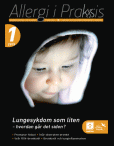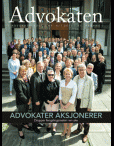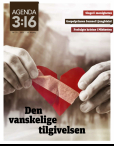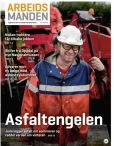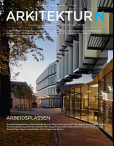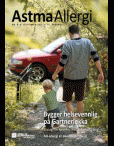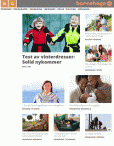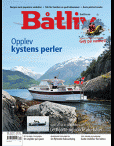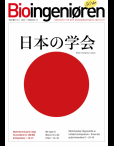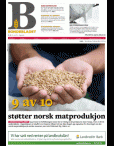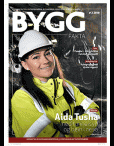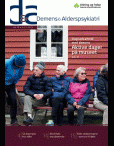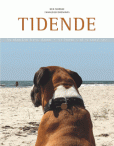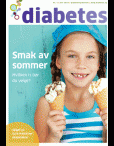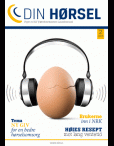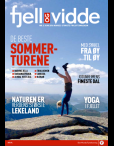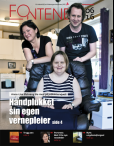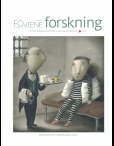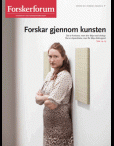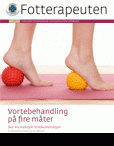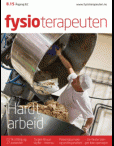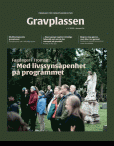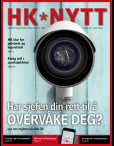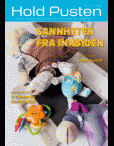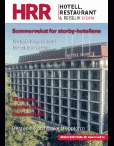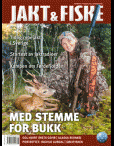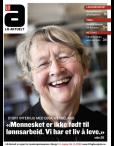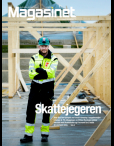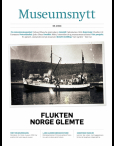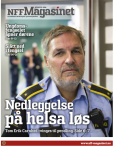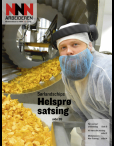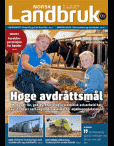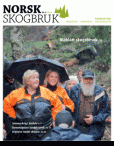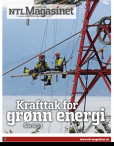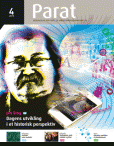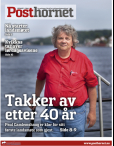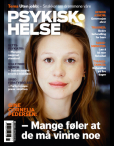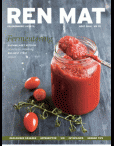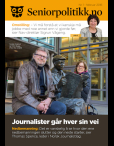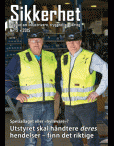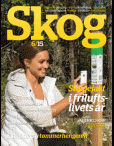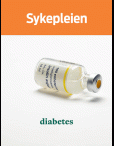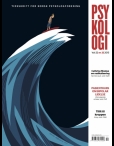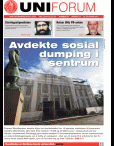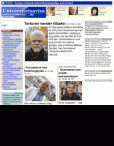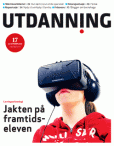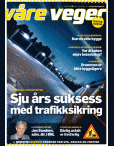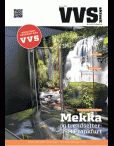Allergi i Praksis
06.11.2017

Regular physical exercise and participation in sports are considered to be important components of a healthy life and are recommended for all individuals (1).
There is unquestionable evidence that regular physical activity contributes to the primary and secondary prevention of cardiovascular diseases and several other chronic conditions (2). Guidelines recommend children above 2 years and youth to participate in at least 60 minutes of enjoyable, moderate-intensity physical activities every day (1). However, exercise is a powerful and frequent trigger of different hypersensitivity events that impair performance. The all-encompassing term exercise-induced (EI) hypersensitivity syndromes include EI-asthma (EIA), EI-bronchoconstriction (EIB), EI-rhinitis, EI-anaphylaxis and EI-urticaria.
Most asthmatic subjects may experience respiratory symptoms provoked by exercise (3). Such evidence of asthmatic symptoms occurring during exercise prompted avoidance of physical activity by asthmatics throughout the years, leading to detrimental consequences to physical and social well-being of these patients. Asthma has been associated with reduced physical activity and obesity (4, 5). More recent data, however, changed this paradigm; evidence that physically active children and youth have higher levels of cardiorespiratory endurance compared to inactive young people (1), turned exercise to become regarded with greater interest for asthmatic patients.
However, while structured exercise on a recreational level has been shown to be beneficial, repeated high-intensity exercise performed by elite athletes has been pointed out to contribute to the development of asthma and bronchial hyperresponsiveness (BHR) (6). Also, in contrast to moderate or intermittent physical activity, prolonged and intensive exertion causes numerous deleterious changes in immunity that reflects physiological stress and immune suppression (7-9).
EI-rhinitis, characterized by itching, sneezing, rhinorrhea and/or postnasal drainage, nasal congestion and occasional anosmia provoked by exercise, is frequently accompanied by eye, ear or throat symptoms (10). Athletes with rhinitis, particularly congestion, often complain about disturbed sleep, daytime somnolence, fatigue and impaired performance (11). Treating rhinitis, especially reducing nasal congestion, should improve sleep and thereby improve quality of life and, most likely, athletic performance. Controlling rhinitis also may improve asthma control. Certain medications for athletes with asthma and rhinitis who participate in regulated competitions are not allowed.
EI-urticaria and EI-anaphylaxis, the later possibly being related to specific food ingestion (a process named food dependent exerciseinduced anaphylaxis - FDEIA), are much lesser frequent, but yet with an important impact in performance and quality of life. EI-anaphylaxis is a rare, unpredictable event, and the most serious and potentially life-threatening syndrome associated with exercise (12); 2-15 % of anaphylactic episodes are caused by or associated with exercise (13, 14). As recurrences might occur under the same conditions, consequently, future exercise-related activities are often curtailed. EI-urticaria also appears in athletes without an associated anaphylactic reaction and is frequently driven by physical and environmental stimuli, like high temperatures (cholinergic urticaria) or even cold environments.
The aim of this article is to review the effects of exercise on asthma and allergies focusing in regular patients and also addressing the particular athlete's asthma phenotype, as well as to provide evidence on new perspectives of beneficial effects of exercise in patients with asthma and/or allergy.
The patient with asthma: to exercise or not to exercise?
Exercise is one of many non-pharmacologic and non-immunologic stimuli that can produce episodes of airway obstruction in asthmatic patients. In fact, physical activity is the second leading cause of acute airway constriction and ranks only behind viral upper respiratory tract infections (URTI) in this regard (15). Most of the asthmatic subjects without anti-inflammatory treatment experience an asthma attack provoked by exercise (4). EI-asthma is most frequently seen in children and young adults because of their high levels of physical activity (16).
Classical postulated mechanisms behind EIA include the osmotic or airway-drying hypothesis (17). Physical activity increases the need for oxygen, thus increasing ventilation and, therefore, the amount of air passing through the airways to and from the lungs. As water evaporates from the airway surface liquid, it becomes hyperosmolar, thereby providing an osmotic stimulus for water to move from nearby cells (17). This results in shrinkage of nearby cells and the release of inflammatory mediators that causes airway smooth muscle contraction in susceptible individuals. Besides the water loss, increased ventilation also promotes heat loss. So, another explanatory hypothesis focuses on cooling of the airways caused by increased ventilation, which causes reflex parasympathetic nerve stimulation that leads to bronchoconstriction through stimulation of the vagal nerve, initially causing reflex vasoconstriction to conserve heat, followed at the end of the exercise by secondary airway rewarming with vascular bronchial congestion, edema, and further narrowing of the airways (18). However, the increased water loss due to the rise in ventilation is considered to be more important than the heat loss, as it increases the osmolality of the extracellular fluid of the bronchial mucosal membranes (18). The release of both newly formed mediators and pre-formed mediators induced by changes in osmolarity, and that cause bronchoconstriction, can be inhibited by treatment with anti-inflammatory agents.
Starting anti-inflammatory treatment and obtaining better asthma control has shown to increase both fitness and level of vigorous activity after 1 year of treatment (19, 20). For the asthmatic patient, it is important to control EIA without being dependent upon planned pre-medication before planned exercise training. Thus, anti-inflammatory treatment becomes important for the daily life activities of our asthmatic patients in order to control EIA and allow full participation in physical activity, play and sporting activities (21). According to GINA guidelines, the presence of symptoms with exercise is a marker of poor asthma control indicating a need for additional controller medications (22). Table 1 summarizes currently available drugs for asthma treatment (23).
Asthmatic children
It has been reported that asthma limits the participation of children in physical activity, especially vigorous physical activity (24). Newly diagnosed asthmatic adolescents are less fit and have lower levels of vigorous physical activity than control subjects (19, 20). Asthmatic children suffering from EIA will become passive and participate at a low level in physical activity and play (3). Symptoms every time the child exercises and has Physical Education classes at school leads parents to suggest to doctors that «because he/ she is constantly wheezing when he/ she runs, he/she should have a note from you excusing the child from Physical Education classes» (25). This starts a vicious circle of respiratory symptoms, inactivity, and physical deconditioning (FIGURE 1). This is particularly concerning, given the recent evidence of benefits arising from regular exercise practicing.
There is now accumulating evidence that physical training may have positive effects on asthma (21, 26-32). A systematic review of eight studies of asthmatic subjects undertaking physical training included 226 asthmatics above 8 years-old and concluded that physical training improved cardiopulmonary fitness (26). Later, other systematic reviews reported similar findings (28, 29). Several studies also reported improved quality of life of asthmatics in the actively training groups (21, 27, 30, 32, 33), not only in children but also in their caregivers (33). Regarding inflammatory outcomes, regular training reduced total and house dust mite-specific IgE levels in asthmatic children (34). Airway responsiveness assessed by exercise or methacholine challenge was reduced in asthmatic children after 3 months of aerobic training or after a swimming program (32, 35). In addition, in asthmatic adults, lower sputum eosinophilia as well as exhaled nitric oxide levels after 3 months of aerobic training has been shown (36).
So, given the current evidence, physical activity should be recommended as a supplementary therapy to medication in asthmatic subjects (27, 37). Asthmatic patients can be physically active and fit and may participate in sports activities, provided they receive optimal treatment for their asthma (18) and so, treating and preventing EIA has become one of the main objectives among all guidelines (22, 38-40). The role of the school, and in particular her Physical Education teacher, is important, and their understandingof asthma may need to be explored and improved, particularly around access to medication (25). All too often, it remains the case that children have difficulty accessing their medication, a problem that can be amplified on the playing field or playground, with teachers considering that children may be using their asthma and its symptoms as an excuse to avoid games or sports (25). Educational programs for teachers to help dealing with these conditions may be helpful (41). This would avoid the withdrawal from exercise that sometimes children and their families request to doctors and which should be resisted. In the meanwhile, it is important to be sure of the correct diagnosis. Methods to diagnose EIA and the possible differential diagnosis are presented in table 2 and table 3 (SEE PAGE 10), respectively.
Prescription of exercise:
which sport for the asthmatic?
This is a common question that asthmatic patients pose to their doctor, after being encouraged to exercise. The most important answer is to assure the patient that as long as the asthma is well-controlled, any sport can be chosen and he/she should practice the one that is the most enjoyed. Though no limitations in sport selection should arise for patients with EIA, symptoms may be decreased by selecting a sport based on its low asthmogenic potential (42).
Sports with low risk for asthma are the ones in which the physical effort is of short duration and in which high ventilatory levels are not reached. Medium-risk sports are team sports in general, in which the alternation of aerobic and anaerobic phases, as well as the relatively brief periods of continuous high-intensity exercise (in any case usually lower than 5-8 min) result in a lower risk of bronchial hyperreactivity. High-risk sports are endurance and winter sports (3).
Swimming should be encouraged since it has been previously shown t
Gå til medietMost asthmatic subjects may experience respiratory symptoms provoked by exercise (3). Such evidence of asthmatic symptoms occurring during exercise prompted avoidance of physical activity by asthmatics throughout the years, leading to detrimental consequences to physical and social well-being of these patients. Asthma has been associated with reduced physical activity and obesity (4, 5). More recent data, however, changed this paradigm; evidence that physically active children and youth have higher levels of cardiorespiratory endurance compared to inactive young people (1), turned exercise to become regarded with greater interest for asthmatic patients.
However, while structured exercise on a recreational level has been shown to be beneficial, repeated high-intensity exercise performed by elite athletes has been pointed out to contribute to the development of asthma and bronchial hyperresponsiveness (BHR) (6). Also, in contrast to moderate or intermittent physical activity, prolonged and intensive exertion causes numerous deleterious changes in immunity that reflects physiological stress and immune suppression (7-9).
EI-rhinitis, characterized by itching, sneezing, rhinorrhea and/or postnasal drainage, nasal congestion and occasional anosmia provoked by exercise, is frequently accompanied by eye, ear or throat symptoms (10). Athletes with rhinitis, particularly congestion, often complain about disturbed sleep, daytime somnolence, fatigue and impaired performance (11). Treating rhinitis, especially reducing nasal congestion, should improve sleep and thereby improve quality of life and, most likely, athletic performance. Controlling rhinitis also may improve asthma control. Certain medications for athletes with asthma and rhinitis who participate in regulated competitions are not allowed.
EI-urticaria and EI-anaphylaxis, the later possibly being related to specific food ingestion (a process named food dependent exerciseinduced anaphylaxis - FDEIA), are much lesser frequent, but yet with an important impact in performance and quality of life. EI-anaphylaxis is a rare, unpredictable event, and the most serious and potentially life-threatening syndrome associated with exercise (12); 2-15 % of anaphylactic episodes are caused by or associated with exercise (13, 14). As recurrences might occur under the same conditions, consequently, future exercise-related activities are often curtailed. EI-urticaria also appears in athletes without an associated anaphylactic reaction and is frequently driven by physical and environmental stimuli, like high temperatures (cholinergic urticaria) or even cold environments.
The aim of this article is to review the effects of exercise on asthma and allergies focusing in regular patients and also addressing the particular athlete's asthma phenotype, as well as to provide evidence on new perspectives of beneficial effects of exercise in patients with asthma and/or allergy.
The patient with asthma: to exercise or not to exercise?
Exercise is one of many non-pharmacologic and non-immunologic stimuli that can produce episodes of airway obstruction in asthmatic patients. In fact, physical activity is the second leading cause of acute airway constriction and ranks only behind viral upper respiratory tract infections (URTI) in this regard (15). Most of the asthmatic subjects without anti-inflammatory treatment experience an asthma attack provoked by exercise (4). EI-asthma is most frequently seen in children and young adults because of their high levels of physical activity (16).
Classical postulated mechanisms behind EIA include the osmotic or airway-drying hypothesis (17). Physical activity increases the need for oxygen, thus increasing ventilation and, therefore, the amount of air passing through the airways to and from the lungs. As water evaporates from the airway surface liquid, it becomes hyperosmolar, thereby providing an osmotic stimulus for water to move from nearby cells (17). This results in shrinkage of nearby cells and the release of inflammatory mediators that causes airway smooth muscle contraction in susceptible individuals. Besides the water loss, increased ventilation also promotes heat loss. So, another explanatory hypothesis focuses on cooling of the airways caused by increased ventilation, which causes reflex parasympathetic nerve stimulation that leads to bronchoconstriction through stimulation of the vagal nerve, initially causing reflex vasoconstriction to conserve heat, followed at the end of the exercise by secondary airway rewarming with vascular bronchial congestion, edema, and further narrowing of the airways (18). However, the increased water loss due to the rise in ventilation is considered to be more important than the heat loss, as it increases the osmolality of the extracellular fluid of the bronchial mucosal membranes (18). The release of both newly formed mediators and pre-formed mediators induced by changes in osmolarity, and that cause bronchoconstriction, can be inhibited by treatment with anti-inflammatory agents.
Starting anti-inflammatory treatment and obtaining better asthma control has shown to increase both fitness and level of vigorous activity after 1 year of treatment (19, 20). For the asthmatic patient, it is important to control EIA without being dependent upon planned pre-medication before planned exercise training. Thus, anti-inflammatory treatment becomes important for the daily life activities of our asthmatic patients in order to control EIA and allow full participation in physical activity, play and sporting activities (21). According to GINA guidelines, the presence of symptoms with exercise is a marker of poor asthma control indicating a need for additional controller medications (22). Table 1 summarizes currently available drugs for asthma treatment (23).
Asthmatic children
It has been reported that asthma limits the participation of children in physical activity, especially vigorous physical activity (24). Newly diagnosed asthmatic adolescents are less fit and have lower levels of vigorous physical activity than control subjects (19, 20). Asthmatic children suffering from EIA will become passive and participate at a low level in physical activity and play (3). Symptoms every time the child exercises and has Physical Education classes at school leads parents to suggest to doctors that «because he/ she is constantly wheezing when he/ she runs, he/she should have a note from you excusing the child from Physical Education classes» (25). This starts a vicious circle of respiratory symptoms, inactivity, and physical deconditioning (FIGURE 1). This is particularly concerning, given the recent evidence of benefits arising from regular exercise practicing.
There is now accumulating evidence that physical training may have positive effects on asthma (21, 26-32). A systematic review of eight studies of asthmatic subjects undertaking physical training included 226 asthmatics above 8 years-old and concluded that physical training improved cardiopulmonary fitness (26). Later, other systematic reviews reported similar findings (28, 29). Several studies also reported improved quality of life of asthmatics in the actively training groups (21, 27, 30, 32, 33), not only in children but also in their caregivers (33). Regarding inflammatory outcomes, regular training reduced total and house dust mite-specific IgE levels in asthmatic children (34). Airway responsiveness assessed by exercise or methacholine challenge was reduced in asthmatic children after 3 months of aerobic training or after a swimming program (32, 35). In addition, in asthmatic adults, lower sputum eosinophilia as well as exhaled nitric oxide levels after 3 months of aerobic training has been shown (36).
So, given the current evidence, physical activity should be recommended as a supplementary therapy to medication in asthmatic subjects (27, 37). Asthmatic patients can be physically active and fit and may participate in sports activities, provided they receive optimal treatment for their asthma (18) and so, treating and preventing EIA has become one of the main objectives among all guidelines (22, 38-40). The role of the school, and in particular her Physical Education teacher, is important, and their understandingof asthma may need to be explored and improved, particularly around access to medication (25). All too often, it remains the case that children have difficulty accessing their medication, a problem that can be amplified on the playing field or playground, with teachers considering that children may be using their asthma and its symptoms as an excuse to avoid games or sports (25). Educational programs for teachers to help dealing with these conditions may be helpful (41). This would avoid the withdrawal from exercise that sometimes children and their families request to doctors and which should be resisted. In the meanwhile, it is important to be sure of the correct diagnosis. Methods to diagnose EIA and the possible differential diagnosis are presented in table 2 and table 3 (SEE PAGE 10), respectively.
Prescription of exercise:
which sport for the asthmatic?
This is a common question that asthmatic patients pose to their doctor, after being encouraged to exercise. The most important answer is to assure the patient that as long as the asthma is well-controlled, any sport can be chosen and he/she should practice the one that is the most enjoyed. Though no limitations in sport selection should arise for patients with EIA, symptoms may be decreased by selecting a sport based on its low asthmogenic potential (42).
Sports with low risk for asthma are the ones in which the physical effort is of short duration and in which high ventilatory levels are not reached. Medium-risk sports are team sports in general, in which the alternation of aerobic and anaerobic phases, as well as the relatively brief periods of continuous high-intensity exercise (in any case usually lower than 5-8 min) result in a lower risk of bronchial hyperreactivity. High-risk sports are endurance and winter sports (3).
Swimming should be encouraged since it has been previously shown t


